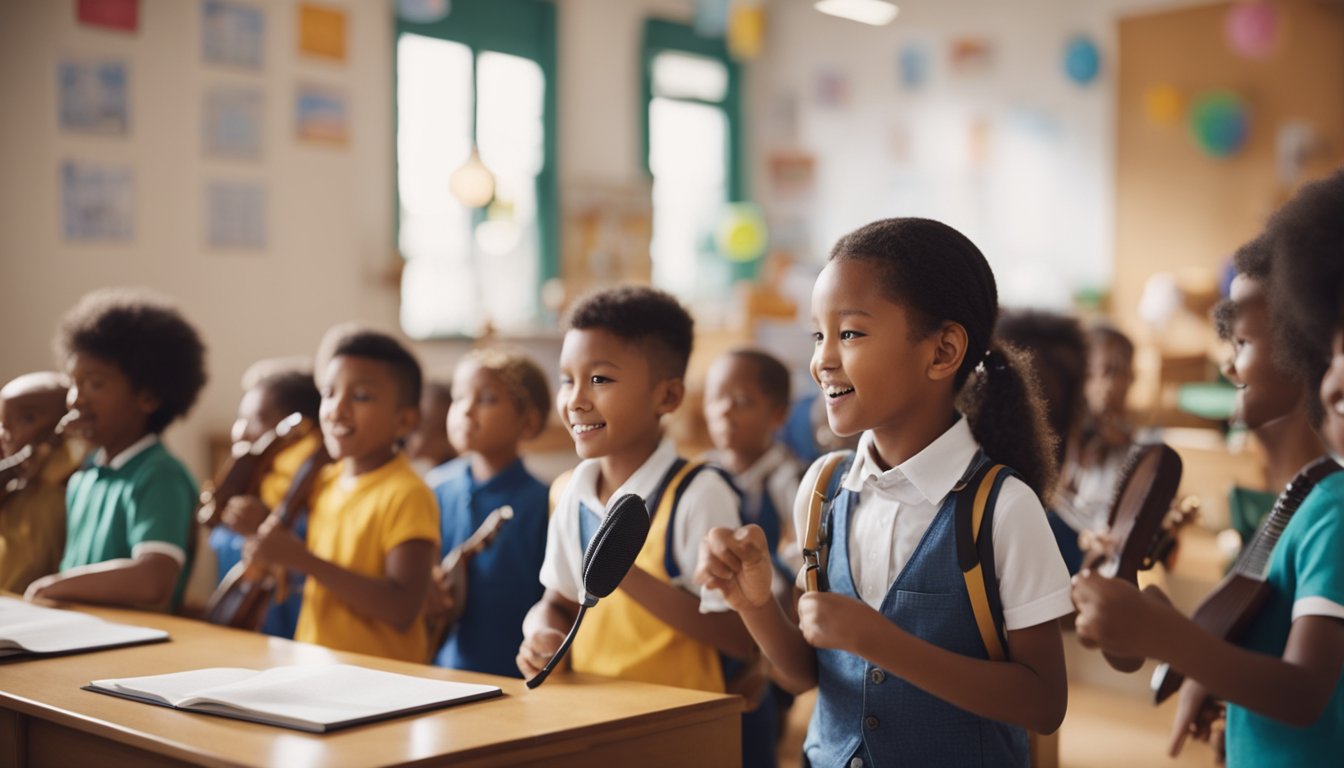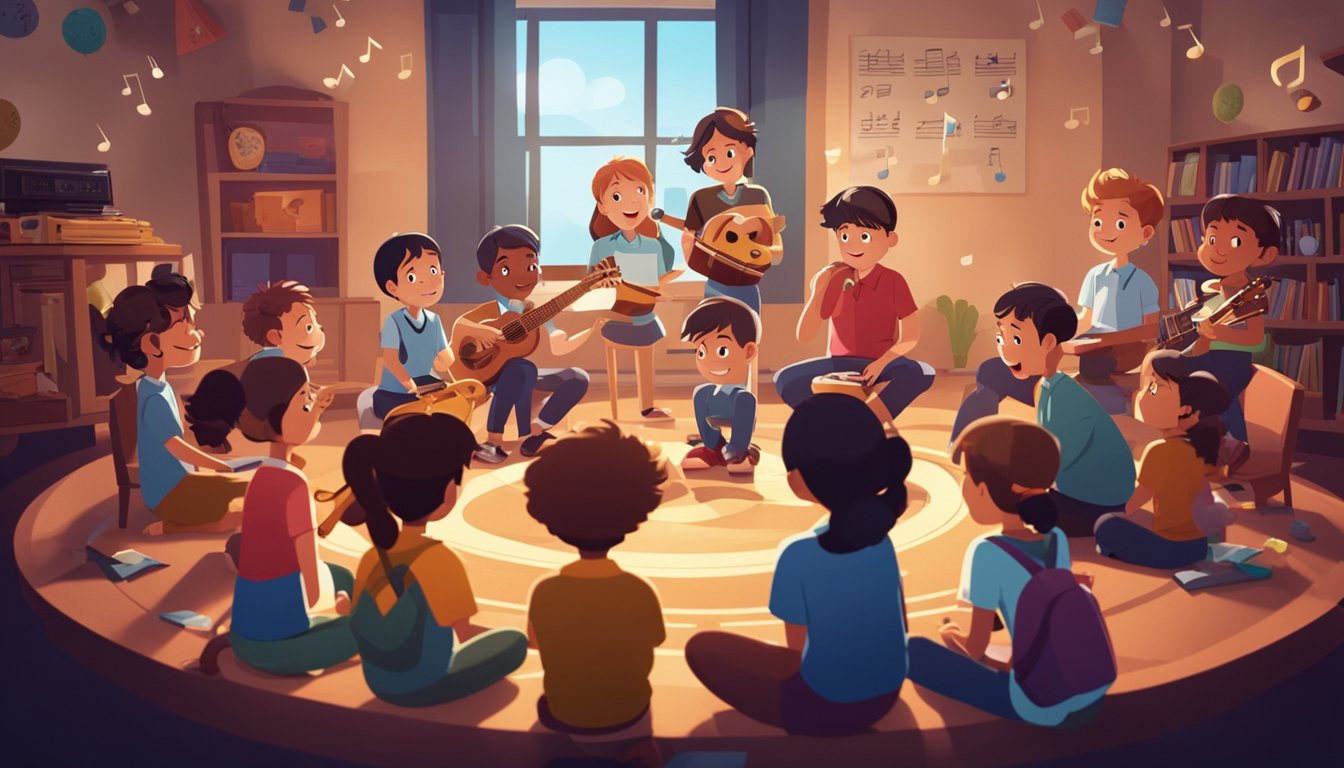Late updated: 21 Feb 2025 15:02
Written by:
Tips for Engaging Children in Music Education: Effective Strategies for Success
Engaging children in music education can significantly enrich their lives and aid in their overall development. It is crucial for educators and parents to employ strategies that not only teach children the technicalities of music but also foster a lasting appreciation for it. Understanding how to effectively engage children in music education can transform the learning process into an enjoyable and enriching experience.

Our approach to teaching music combines creativity with structure, ensuring that children connect with music both intellectually and emotionally. By introducing multi-sensory learning tools and creating an environment where children feel welcomed and valued, educators can inspire students to explore their musical potential more deeply.
Combining traditional methods with innovative techniques can yield excellent results. Let us delve into effective strategies designed to foster a love of music and enhance children's educational journey. Through purposeful engagement, we can help children experience the joy and beauty music brings.
Key Takeaways
- Foster a love for music to enhance the learning process.
- Create engaging and welcoming learning environments.
- Use innovative strategies to inspire musical exploration.
Cultivating an Enjoyment of Music

Encouraging children to find joy in music involves nurturing their creativity and providing a structured environment where they can build confidence and discipline. By engaging them in diverse musical activities, we ignite their passion and inspire lifelong appreciation.
Fostering Creativity through Musical Exploration
Creativity flourishes when children are encouraged to explore music in varied and enriching ways. We can introduce children to a wide range of musical styles and instruments, allowing them to experiment and discover their unique preferences.
For instance, activities like creating playlists of different genres or improvisational sessions with simple instruments can be both exciting and educational. Encouraging children to express themselves through writing lyrics or composing melodies further enhances their creative skills. Activities should be fun and interactive, ensuring that they spark curiosity and enthusiasm.
Incorporating technology, such as music creation apps, can make exploration more interactive and engaging. This hands-on experience not only boosts creativity but also deepens their understanding of music.
Encouraging Confidence and Discipline in Music Learning
Building confidence in music is as essential as nurturing creativity. Regular practice and praise for effort rather than perfection help foster a positive self-image in young learners. We focus on setting achievable goals, which builds a sense of accomplishment and encourages persistence.
Discipline is cultivated through consistent practice schedules, which help instil a routine that balances study and play. Participation in group activities like choirs or ensembles also nurtures confidence as children learn to collaborate in a team.
Through patience and gentle guidance, we support children in overcoming challenges, building resilience and a lifelong love for music. Offering constructive feedback helps them recognise their growth and potential.
By encouraging self-expression and commitment, we guide children towards experiencing the profound enjoyment that music offers.
Effective Teaching Strategies
Engaging children in music education requires a thoughtful approach. Our focus includes adapting to varying attention spans, making use of visual aids and interactive methods, and incorporating music theory in a mindful way to make music lessons both informative and engaging.
Adapting to Children's Varying Attention Spans
Children often have shorter attention spans, which can present challenges during music lessons. We can address this by breaking lessons into shorter, diverse activities. By rotating between different musical exercises and breaks, we can keep engagement high.
Use of games and quick challenges also boosts focus. Encouraging children to participate in short, competitive activities that reinforce lesson material can captivate their interest. When children are actively involved, they're less likely to become distracted and more likely to retain information.
Incorporating movement is another effective technique. Introducing kinesthetic elements, such as clapping to rhythms or marching to beats, keeps lessons dynamic and ensures that children remain physically engaged while learning.
Utilising Visual Aids and Interactive Techniques
Visual aids are powerful tools in capturing the attention of young learners. Utilising tools like charts, diagrams, or colourful illustrations helps convey concepts like musical notes or scales more effectively. These visuals make abstract ideas tangible for kids, aiding their conceptual understanding.
Interactive techniques go beyond traditional teaching methods. Incorporating technology through apps or online platforms allows us to provide interactive experiences. These methods transform learning music into an engaging activity, rather than a passive task.
Using musical instruments or digital interfaces gives children a chance to experiment, fostering their musical creativity. This not only enhances learning but also encourages children to explore music independently.
Incorporating Music Theory Thoughtfully
Music theory can often seem daunting to children. Our approach is to introduce it gradually, weaving theory seamlessly into practical activities. By relating theory to songs they love, children grasp these concepts more readily.
One effective method is relating theory to rhythm and melodies. These elements can be explored through clapping exercises or singing familiar tunes, making theory an integral part of their overall learning experience.
Additionally, aligning theory lessons with actual music pieces they can practice brings a sense of accomplishment. This hands-on learning approach helps demystify music theory, making it accessible and less intimidating for children. By aligning theory with practice, we create a balanced and engaging educational experience.
Frequently Asked Questions

Engaging children in music education requires thoughtful strategies. Employing effective techniques and understanding the diverse learning styles can significantly enhance the musical journey for young learners.
What are effective methods for introducing music to beginners in a classroom setting?
When introducing music to beginners, starting with simple songs helps build familiarity. Incorporating interactive elements like clapping or rhythm games can make lessons engaging. Use visual aids to illustrate musical concepts, which aids in comprehension and retention.
What techniques can be employed to teach music effectively in primary schools?
Implementing a mix of auditory, visual, and kinesthetic learning approaches ensures that primary school students can connect with music in various ways. Encouraging group activities fosters teamwork and reinforces musical concepts through collaboration.
How can educators support and encourage children's involvement in musical experiences?
Creating a supportive environment where children feel comfortable expressing themselves musically is crucial. Providing positive feedback and recognising individual progress can motivate students to participate actively. Offering diverse musical experiences allows children to explore different genres and instruments.
What strategies can be used to incorporate music and movement in an engaging way for young learners?
Integrating movement into music lessons can captivate young learners' attention. Activities like dance routines or simple choreography help them understand rhythm and melody. Encouraging movement during music sessions can enhance engagement and reinforce learning.
In what ways can teaching music influence a child’s overall development?
Music education can enhance cognitive skills, such as memory and problem-solving. It fosters emotional expression and helps develop social skills through group performances. Additionally, it can improve language abilities and contribute to a child's cultural awareness.
What are the most successful approaches to conduct a music class for diverse learning styles?
Addressing diverse learning styles involves varying teaching methods. Using a mix of demonstrations, hands-on activities, and auditory instruction caters to different preferences. Personalising lessons to individual learning needs allows each student to engage more fully with the material.
